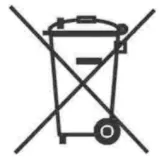
RoHS Certification Testing Methods for Electronic Products
What is ROHS certification?
RoHS, or "Restriction of Hazardous Substances", is a mandatory standard established by the European Union (EU) to restrict the use of certain hazardous substances in electrical and electronic equipment. Implemented on JULy 1, 2006, RoHS certification has become a "green pass" for entering the EU market and has had a profound impact on the global electronics industry.
Environmental Significance and Global Impact of RoHS Certification
RoHS certification was introduced out of deep concern for environmental protection and human health. With the widespread use of electronic products, hazardous substances such as lead, mercury, and cadmium in electronic waste can cause severe soil, water, and air pollution if not properly handled, posing threats to ecosystems and human well-being.
By restricting the use of these hazardous substances, RoHS certification aims to REDuce the negative environmental impacts of electronic products throughout their lifecycle.
- Global Impact
The influence of RoHS certification extends beyond the EU. Many other countries and regions have enacted similar regulations. This has not only accelerated the adoption of environmentally friendly practices in the global electronics industry but has also encouraged companies to use greener materials and technologies, driving a sustainable transformation across the sector.
Principles and Methods of ROHS Testing
Testing Principles
The core principle of rohs testing is to divide the product by material type and test each material separately for hazardous substances. This ensures comprehensive and accurate testing.
- Testing Metal Materials
The primary focus is on detecting four hazardous metallic elements:
- Cadmium (Cd)
- Lead (Pb)
- Mercury (Hg)
- Hexavalent Chromium (Cr6+)
- Testing Plastic Materials
In addition to the above four hazardous metals, brominated flame retardants must also be tested:
- Polybrominated Biphenyls (PBBs)
- Polybrominated Diphenyl Ethers (PBDEs)
This classification-based testing approach considers the specific hazardous substances that may be present in different materials, ensuring comprehensive detection.
Testing Process
The RoHS testing process typically involves the following steps:
1. Sample Collection
Companies must provide product samples, including all materials and components used.
2. Hazardous Substance Detection
Certified laboratories or agencies conduct tests to identify the presence of hazardous substances in the samples.
3. Issuance of Testing Reports
Based on the test results, the samples are evaluated for compliance with RoHS standards.
Supply Chain Management and Declaration of Conformity
- Supply Chain Management
RoHS certification requires not only compliance of the final product but also close collaboration with suppliers to ensure raw materials and components meet the standards.
- Declaration of Conformity
Companies must issue a RoHS Declaration of Conformity, explicitly stating that their products meet RoHS standards and accepting the corresponding legal responsibilities.
Impact of RoHS Certification on Businesses and Consumers
Significance for Businesses
1. Enhanced Market Competitiveness
Products with RoHS certification are more likely to gain consumer trust, facilitating access to international markets.
2. Improved Brand Reputation
RoHS certification demonstrates a company’s commitment to reducing environmental pollution and fulfilling corporate social responsibility.
Benefits for Consumers
- RoHS certification ensures safer and more environmentally friendly product choices. Products meeting RoHS standards reduce potential risks from hazardous substances, enhancing consumer confidence in their safety.
The implementation of RoHS certification marks a significant step towards a more environmentally friendly and sustainable global electronics industry. It is not merely an environmental standard but a driving force for the green transformation of the entire industry. As environmental awareness continues to grow, the importance of RoHS certification will only increase, guiding the global electronics sector toward greener development.
Email:hello@jjrlab.com
Write your message here and send it to us
 WEEE Registration for Waste Electrical &Electr
WEEE Registration for Waste Electrical &Electr
 MSDS Chemical Safety Testing
MSDS Chemical Safety Testing
 What Are the Differences Between UK REACH and EU R
What Are the Differences Between UK REACH and EU R
 E-Cigarette GB 41700 Compliance Testing
E-Cigarette GB 41700 Compliance Testing
 What Are the Testing Items of California Propositi
What Are the Testing Items of California Propositi
 E-Cigarette EU TPD Testing
E-Cigarette EU TPD Testing
 Testing Certification for E-cigarettes Exported to
Testing Certification for E-cigarettes Exported to
 What is Amazon US CPC Certification?
What is Amazon US CPC Certification?
Leave us a message
24-hour online customer service at any time to respond, so that you worry!




